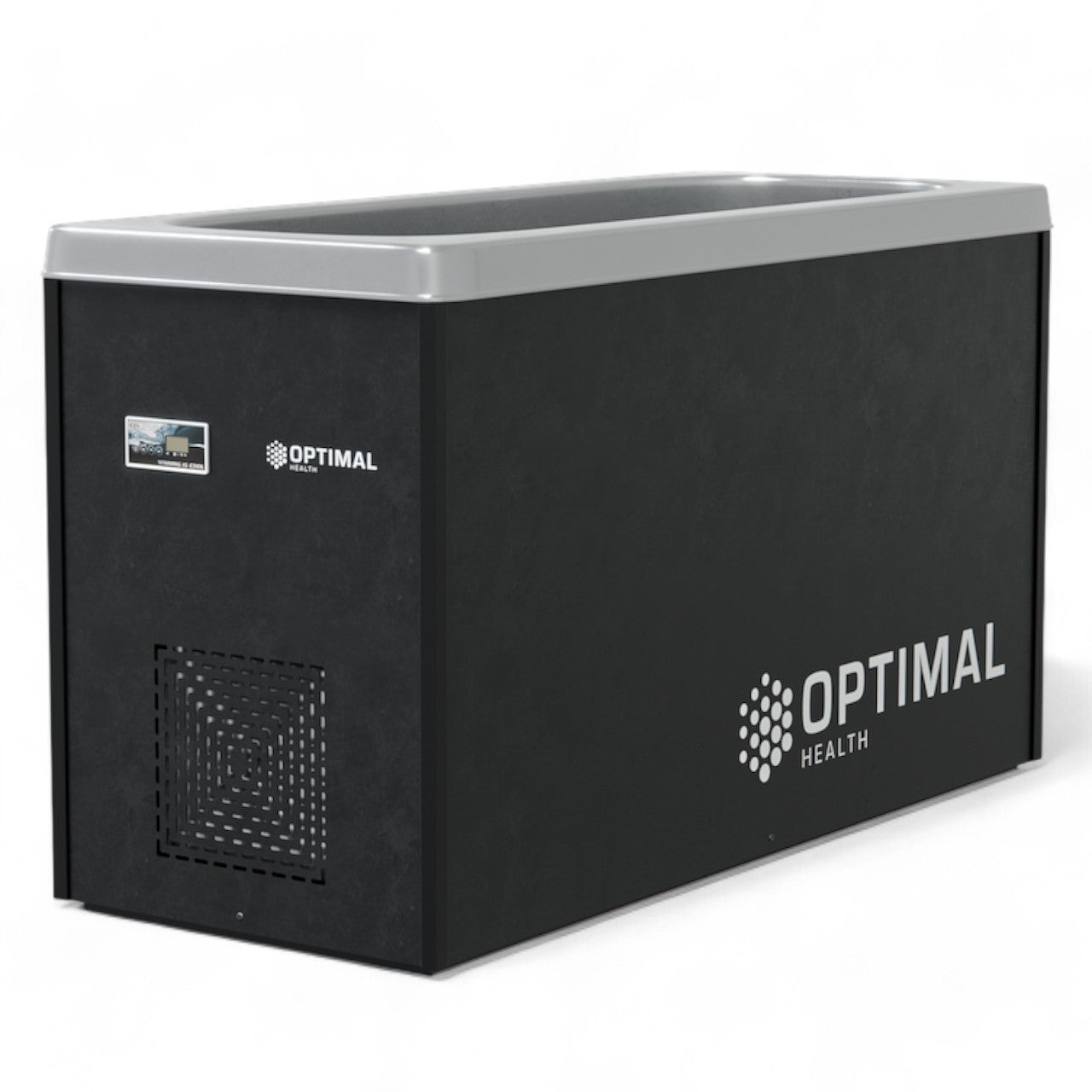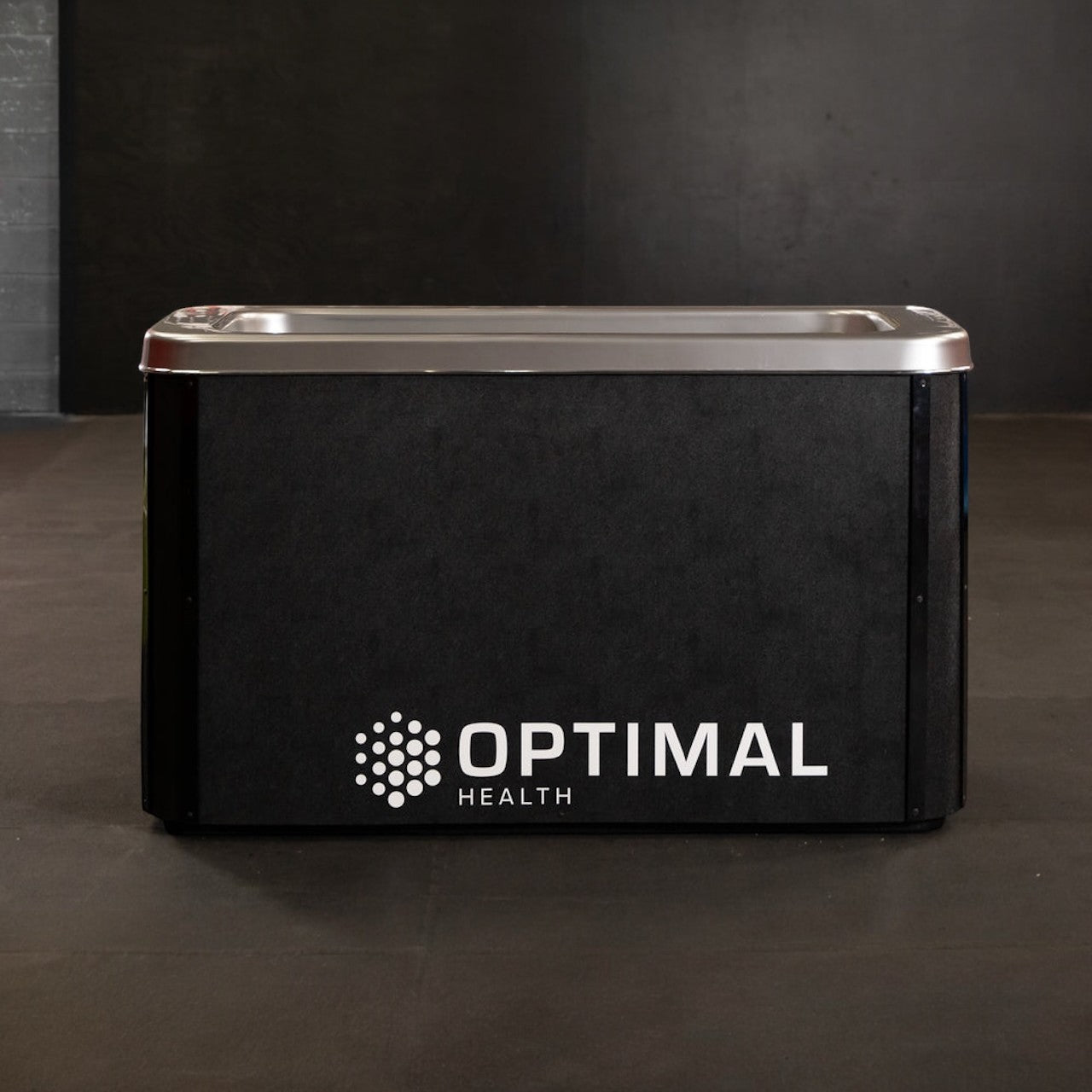We have recently teamed up with Recover Hyperbaric Chambers and we are delighted to offer our customer base their industry leading products. Hyperbaric chambers are a remarkable and effective tool for treating a wide range of conditions by utilising increased air pressure and pure oxygen. Designed to use hyperbaric oxygen therapy (HBOT), these chambers allow patients to breathe higher oxygen concentrations than possible under normal atmospheric conditions. The enhanced oxygen intake works to fight bacteria, promote the formation of new blood vessels, and accelerate the healing process for damaged tissues.
There are variations in design and function among chambers, allowing for tailored treatment options to suit individual needs. The use of hyperbaric oxygen therapy involves a regulated procedure to gradually increase and decrease the pressure within the chamber to ensure optimal benefits are achieved while minimising risks of potential side effects.
Key Takeaways
- They promote healing by providing patients with high concentrations of oxygen.
- Different types allow for individualised treatment options.
- Involves a controlled procedure to optimise benefits and minimise risks.
How Do Hyperbaric Chambers Work: An Overview
Also known as HBOT chambers, are pressurised enclosures. This treatment method exposes patients to pressurised oxygen to promote healing, reduce swelling, and restore body functions. Patients either use a monoplace hyperbaric oxygen therapy chamber, which accommodates a single individual, or multi-place chambers, which can host several patients simultaneously.
The primary concept is to increase the pressure within the chamber to 2 to 3 times higher than normal atmospheric pressure. By doing so, the patient's lungs can absorb much more oxygen than they would by merely breathing pure air at standard levels. The enhanced oxygen intake then helps the body fight bacteria, repair tissue damage, and improve overall health.
Chambers supply patients with a 100% oxygen levels, significantly higher than the 21% oxygen found in room air. This increased oxygen enriches the blood and floods the tissues, reducing swelling and oxygen starvation. This process ultimately helps break the cycle of tissue damage and death while also preventing reperfusion injury, a common issue that arises from tissue damage due to inadequate blood and oxygen supply.
Some common uses, include treating chronic wounds, decompression sickness, carbon monoxide poisoning, and radiation injuries. However, it is crucial to note it is not appropriate for every medical condition, and the treatment plan and duration should always be tailored to each patient's individual needs by a qualified medical professional.
Working Principle of Hyperbaric Chambers
They are designed to create an environment with a higher than normal air pressure. This increased pressure in the chamber allows for a higher concentration for the individual undergoing treatment. The basic principle involves breathing 100% oxygen at pressures greater than normal atmospheric pressure.
Patients inside the chamber receive their oxygen through a mask or a hood, enabling them to breathe in the pure oxygen at high concentrations. This process increases the amount of oxygen in the blood, transporting it to the various tissues throughout the body.
The primary reason behind increasing the pressure in the chamber is to enable the body to absorb more oxygen than it would under normal conditions. Increased levels in the blood lead to several potential benefits, including promoting the healing process of damaged tissues and accelerating the removal of toxins for patients suffering from carbon monoxide poisoning.
Types of Hyperbaric Chambers
There are primarily two types used: monoplace and multiplace. A monoplace chamber is meant for a single patient, whereas a multiplace can accommodate more than one person during the treatment. Both types of chambers serve the same purpose, delivering high levels of oxygen to the patients within the pressurised environment. These chambers are specifically designed to provide patients with an optimal environment for healing, ensuring both safety and effectiveness of the treatment.
Monoplace models are designed to accommodate only one person at a time. They are typically constructed from a clear acrylic tube, allowing the patient to lie down or recline comfortably within the chamber. High-pressure oxygen is delivered into the tube, creating an oxygen-rich environment for the patient. These chambers are suitable for individual therapy sessions and are often found in smaller clinical settings or as part of a home-based therapy system.
Multiplace chambers, on the other hand, can accommodate multiple patients simultaneously. These chambers resemble a small pressurised room, similar to an airplane cabin, and are equipped with several chairs or beds for patients to utilise during treatment. Multiplace chambers are commonly used in larger healthcare settings or specialised treatment centres, where multiple patients can receive the treatment simultaneously, under the supervision of medical professionals.
In addition to these primary types, there are also specialised chambers designed for specific treatment purposes. Some examples include portable chambers for emergency situations, veterinary chambers for treating pets, and even chambers for treating large groups of people in a community setting. These specialised chambers can vary in design and capacity, depending on the intended use and patient population.
Regardless of the type, the ultimate goal is to deliver increased oxygen to the patient's body at a higher-than-normal atmospheric pressure. This helps to enhance the body's natural healing processes, promote tissue regeneration, and improve overall health outcomes. By understanding the differences between the various types, healthcare providers can select the most appropriate setting for their patients' needs and ensure optimal therapy results.
Procedure of Hyperbaric Oxygen Therapy
This therapy has been shown to be effective in treating a variety of conditions, including non-healing wounds, infections, and radiation injuries. The procedure is simple, non-invasive, and typically lasts for 90 minutes per session.
At the beginning of the treatment, the patient is placed inside a specially designed chamber. This can either be made for single occupancy or for multiple patients, is then sealed and the pressure inside gradually increased to 2 to 3 times higher than normal atmospheric pressure. This heightened pressure allows the lungs to gather significantly more oxygen than would be possible at normal pressure source.
During the therapy, the patient breathes in pure medical grade oxygen. As oxygen is absorbed by the lungs and enters the bloodstream, it is transported to organs and tissues throughout the body source. This extra oxygen helps healing by stimulating the growth of new blood vessels, reducing inflammation, and enhancing the body's natural ability to fight infections.
Utilised in a variety of treatment applications, for instance, it is used to promote wound healing, particularly in cases of chronic, non-healing wounds or those involving infections. The therapy has been shown to improve the delivery of oxygen to the affected tissues, decrease swelling and oedema, and combat infection, ultimately leading to faster healing source.
It is important to note that it is not suitable for everyone, and medical professionals will carefully assess a patient's suitability for the treatment. In some cases, it may be employed in conjunction with other treatments for optimal results.
Impacts and Benefits of Hyperbaric Oxygen Therapy
In a hyperbaric environment, the pressure is increased up to three times higher than normal, determining how much oxygen the lungs can gather compared to normal circumstances. As a result, this high level in the blood helps to fight bacteria and promote healing in the body.
One of the primary benefits is its ability to help the body heal from a wide range of conditions. By delivering oxygen at increased pressure, the therapy improves the supply of oxygen to damaged tissues, enhancing the body's natural healing abilities. For example, oxygen therapy in the treatment of severe anaemia, sudden vision loss, air or gas embolism, and various soft tissue infections, such as treatment of diabetic foot ulcers and necrosis.
Another significant impact is its role in stimulating the release of growth factors and the activation of stem cells. These processes, in turn, lead to the production of vascular endothelial growth factor and other molecules involved in tissue regeneration, speeding up the healing process. Furthermore, the increased levels promote the function of white blood cells, which play a key role in defending the body against infection.
While the benefits of are numerous, there are risks associated with the therapy. The most common side effects may include fatigue, temporary changes in vision, and nausea. It is essential for healthcare providers to thoroughly assess a patient's medical history and specific needs to determine if it is the most suitable reason for the treatment.
Hyperbaric oxygen therapy can be used alone, or as part of a comprehensive plan in conjunction with other medical treatments such as medications or surgery. This approach helps to ensure the therapy is both safe and effective for patients with a variety of medical conditions. As a result, it has become an essential tool in modern medicine, assisting healthcare professionals in providing efficient and targeted for numerous ailments.
Medical Conditions Treatable with HBOT
Carbon monoxide poisoning is a dangerous condition caused by inhaling excessive amounts of carbon monoxide gas. The oxygen-rich environment helps to displace the carbon monoxide in the bloodstream, allowing vital organs to receive adequate oxygen supply and accelerating recovery from poisoning.
Decompression sickness, also known as the bends, is a potential risk for scuba divers and individuals exposed to rapid changes in atmospheric pressure. This condition occurs when dissolved gases form bubbles within the body, often resulting in pain, joint pain, middle ear discomfort and neurological symptoms. Practitioners use HBOT to treat this by increasing the atmospheric pressure and reducing the volume of gas bubbles, thereby alleviating symptoms and accelerating healing.
Brain injury, such as traumatic (TBI) and anoxic, can benefit due to its ability to enhance oxygen delivery to brain tissues. The therapy helps reduce inflammation, and promotes the healing of injured brain cells, resulting in improved cognitive and motor function.
Diabetic foot ulcers are common complications of diabetes, characterised by poor wound healing and increased risk of infection. It can be particularly beneficial for patients with non-healing diabetic foot ulcers. The increase in levels promotes angiogenesis, facilitates wound healing, and bolsters the immune response to infections.
Risks and Side Effects of HBOT
Hyperbaric Oxygen Therapy has been recognised as an effective treatment for various conditions such as serious infections, and bubbles of air in the blood. However, like any medical treatment, it also has potential risks and side effects.
One of the primary concerns with HBOT is the possibility of oxygen toxicity, which can lead to oxygen poisoning. This occurs when excessive oxygen content in the body causes tissue damage. Oxygen poisoning can result in lung failure, fluid in the lungs, and even seizures in severe cases. However, as long as the therapy doesn't last more than 2 hours and is conducted at a pressure less than 3 times the normal atmospheric pressure, the risk of such complications remains low .
Some of the common side effects of HBOT include:
- Vision changes
- Ear discomfort
- Sinus discomfort
- Tooth pain
- Lung trauma
While these side effects are typically mild, they need to be considered when treating patients. Additionally, individuals undergoing HBOT may experience claustrophobia due to the confined space. This sensation can lead to anxiety, heightened stress levels, and difficulty in completing the therapy.
The Science Behind Hyperbaric Oxygen Therapy
This therapy has been utilised in various medical applications, such as promoting wound healing, reducing inflammation, and treating carbon monoxide poisoning. The core principle of this treatment is based on the body's need for oxygen to function and repair itself, especially in instances where normal levels may not suffice.
The process is where the pressure is increased two to three times higher than the normal atmospheric pressure. This elevated pressure enables the individual's lungs to gather much more oxygen than they would while breathing at normal levels as described by the Mayo Clinic.
One of the key aspects of hyperbaric oxygen therapy is its impact on the oxygen-carrying capacity of the blood. Oxygen is primarily transported in the blood by binding to haemoglobin molecules found in red blood cells. Under normal conditions, an increase in the concentration could only raise haemoglobin's oxygen-carrying capability to a certain extent. However, the elevated atmospheric pressure allows for more oxygen to dissolve directly in the blood plasma, significantly boosting the overall level.
Higher tissue oxygen also provides numerous benefits in the healing process of the body. The extra oxygen not only supports cellular metabolism but also enhances the immune response by stimulating the production of white blood cells. These immune cells are crucial in fighting infections, reducing inflammation, and promoting tissue repair. Moreover, HBOT supports the formation of new blood vessels, which further improves the supply of oxygen and nutrients to the damaged or recovering tissues.
While this therapy may not be a magical cure-all, hyperbaric oxygen therapy has proven to be a valuable and effective treatment for various medical conditions. By utilising the power of increased oxygen concentration and atmospheric pressure, HBOT enhances the body's natural healing processes and supports its need for oxygen to function optimally in certain medical situations.
Understanding the Role of Oxygen in HBOT
Oxygen plays a vital role in the body's healing processes, and the use of a hyperbaric chamber helps increase the concentration of oxygen delivered to cells and tissues.
Typically, pressures in a treatment chamber are 1.5-3 times that of sea level, allowing the body to take in even more oxygen than it would under normal circumstances. The near 100% oxygen in the chamber has profound effects on the body's ability to heal and repair itself.
Haemoglobin, the protein in red blood cells responsible for carrying oxygen, becomes saturated with the increased oxygen levels inside the chamber. This allows even more oxygen to be carried throughout the body and delivered to cells and tissues in need of repair. Because the body utilises oxygen for a wide variety of essential processes, including energy production and inflammation regulation, the increase in oxygen delivery can have significant therapeutic effects.
By inhaling pressurised oxygen, patients can also benefit from its ability to dissolve in their body's plasma, which results in a greater volume of oxygen being transported to tissues with limited blood flow. This dissolved oxygen can pass through areas where red blood cell circulation may be compromised, such as in cases of injury or infection.
Regulatory Bodies and their Stance on HBOT
The Undersea and Hyperbaric Medical Society (UHMS) is an international organisation dedicated to advancing the science and practice of hyperbaric oxygen therapy (HBOT). They provide guidelines and recommendations for the safe and effective in various clinical settings. The UHMS recognises HBOT as a valuable therapeutic option for certain medical conditions and supports ongoing research to expand its applications.
The Food and Drug Administration (FDA) in the United States has a role in regulating the use for medical purposes. The FDA classifies them as medical devices and has cleared their use for specific conditions such as carbon monoxide poisoning and chronic non-healing wounds, among others. However, the FDA cautions against the use for unapproved indications, as it may not have been proven to be effective in those cases.
The European Consensus Conference on Hyperbaric Medicine brings together experts from various hyperbaric medicine associations and societies across Europe. This gathering facilitates the development of a European consensus on the application, safety, and efficacy of HBOT. The conference provides an opportunity for the exchange of knowledge and for setting high standards in the field.
Another similar initiative is the Consensus Conference on Hyperbaric Medicine, which involves representatives from different nations and relevant medical societies. These conferences enable healthcare professionals and researchers to connect and discuss the latest findings and guidelines for the use of HBOT, fostering the development of a consensus-driven approach to treatment.
Various regulatory bodies and professional organisations have acknowledged the potential benefits of HBOT for specific medical conditions. They strive to maintain high standards in the field, regulate the use and support ongoing research to explore new therapeutic applications of hyperbaric medicine.
How To Decide Which Hyperbaric Chamber is Right For You?
When choosing, it's essential to consider factors such as the intended use, budget, design options, and available space in your home. Hyperbaric oxygen therapy (HBOT) chambers deliver mild hyperbaric treatment (mHBOT) at pressure ranges between 1.3-1.5 atmospheres. This therapy facilitates oxygen dissolution and saturation into blood, cerebrospinal fluid, and synovial fluid, thereby contributing to cell rejuvenation and tissue healing.
Firstly, consider the purpose, if you require the chamber for home use, it must be easy to use, safe, and maintainable. In contrast, professional use may demand a chamber with advanced features and a more robust design. Be sure to consult with a medical professional to ensure the right choice for your specific needs.
Next, assess your budget as they can range significantly in price. Research multiple brands and compare prices, bearing in mind that higher prices do not always guarantee better quality. Look for chambers that provide the best balance of quality and affordability.
When selecting a chamber, also evaluate design options. Home models come in a variety of designs to suit individual needs and lifestyles. Some chambers are inflatable, making them more convenient for storage and transport, while others are rigid, offering superior durability and stability. Be mindful of the space available in your home and opt for a chamber that fits comfortably within that area.
Finally, look for chambers with good warranties and reliable after-sales support. A comprehensive warranty can provide peace of mind, ensuring that your investment is protected in case of faults or defects. Additionally, choose a manufacturer or supplier that offers excellent after-sales support for maintenance, repairs, and any necessary troubleshooting.
Q: How does a hyperbaric chamber work?
A: They work by pressurising the environment and allowing the individual inside to breathe in pure oxygen at a higher pressure than what is normally experienced at sea level.
Q: What is a hyperbaric chamber used for?
A: Used for hyperbaric oxygen therapy, which is a medical treatment that involves breathing 100% oxygen in a pressurised chamber.
Q: How does hyperbaric oxygen therapy increase the amount of oxygen in the body?
A: Hyperbaric oxygen therapy increases the amount of oxygen in the body by delivering oxygen to the tissues at a higher pressure than what is normally experienced.
Q: What are the benefits of hyperbaric oxygen therapy?
A: Hyperbaric oxygen therapy has been shown to have both benefits and risks, the positives including promoting wound healing, reducing inflammation, improving blood flow, and enhancing the body's ability to fight infections. Your medical practitioner may use the therapy alone or with other treatments
Q: Are there any risks associated with hyperbaric oxygen therapy?
A: Like any medical treatment, there are risks associated with hyperbaric oxygen therapy, side effects include the potential for ear barotrauma, temporary vision changes, and oxygen toxicity. However, these risks are generally rare and can be minimised with proper monitoring and supervision. In some cases oxygen therapy may not be suitable.
Q: What conditions can be treated with hyperbaric oxygen therapy?
A: Hyperbaric oxygen therapy can be used to treat certain conditions, including non-healing wounds, radiation injuries, and also used to treat certain infections.
Q: How long does a hyperbaric oxygen therapy session last?
A: The duration of a hyperbaric oxygen therapy session can vary depending on the specific condition being treated, but a typical session lasts between 60-90 minutes.
Q: What happens during a hyperbaric oxygen therapy session?
A: In hyperbaric conditions, the individual will enter the special chamber and breathe through a mask or hood. They may also be asked to wear special clothing to ensure the maximum delivery of oxygen to the body's tissues.
Q: How soon can the effects of hyperbaric oxygen therapy be felt?
A: The effects of hyperbaric oxygen therapy can vary from person to person and depend on the specific condition being treated. Some individuals may start to experience improvements after just a few sessions, while others may require more sessions before seeing noticeable results.















Leave a comment